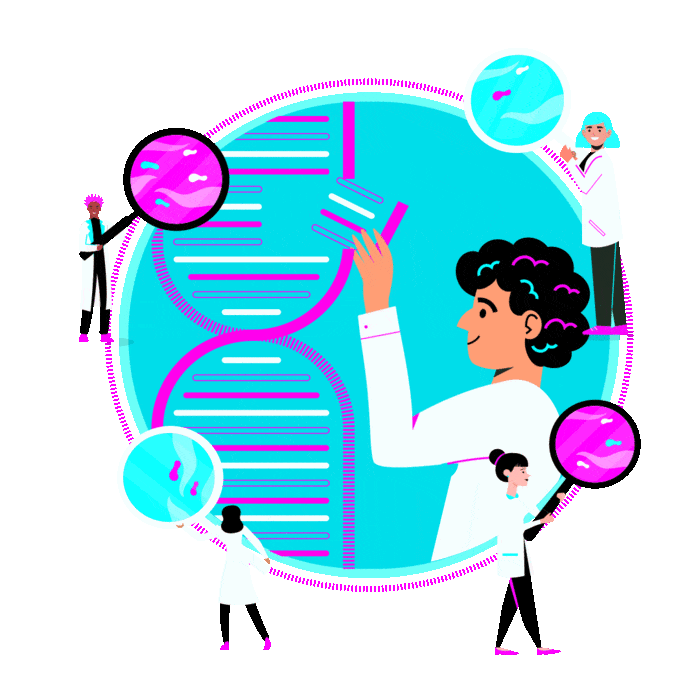

Did you know that the human skin is the largest organ of the body?


An average adult has 2 square metres of skin, which makes up 16% of their body weight.
The outer layer of your skin is called the epidermis
It produces collagen and elastin to give skin its shape, plumpness and elasticity. It contains over 17 kilometres of blood vessels and millions of sweat glands regulate body temperature. It also houses sensitive nerve receptors which enable us to feel the environment around us.
The dermis also contains an army of immune cells allowing us to fight any pathogens, bacteria and viruses. Skin is considered as the first defence of your body. Although the structure remains the same across the body, the properties of the skin varies in different locations, for example you can probably tell there are differences between skin on your face, hands or back.

The anatomical structure of human skin.
Source: Jonquiere's Basic Histology: Text and Atlas, 12th edition
We also know that the skin contains a complex vasculature that serves multiple functions including nutrition and removal of waste products, regulation of body temperature, as well as the movements of immune cells.

What are the differences in the skin vasculature at different locations on the body?
This an interesting question because the skin has always been studied as one organ, but depending on its location, its structure and some proprieties differ.

It is very important to be aware of those differences to be able to better treat skin diseases that affect certain areas, e.g. conditions that are seen more commonly on the facial than the body skin.


Dr Clarisse Ganier is a Centre for Stem Cell & Regenerative Medicine (CSCRM) researcher studying the cells and structure of human skin. One of her areas of interest is the skin vasculature (the blood vessels that supply the skin) using a technology called optical coherence tomography.

What is Optical Coherence Tomography?
To help see the differences in our skin, we are using a non-invasive imaging technology called Optical Coherence Tomography (OCT) which is a relatively novel method in the field of dermatology. The machine we use is an Angiographic-OCT which works by beaming safe, low-power infrared laser light through the top most layers of the skin to detect blood-flow motion as small as the width of a human hair.
3D Angiographic OCT images




Source: Adapted from Wan, Ganier et al.2020
3D Optical Coherence Tomography images from living human skin in the hand palm location.
Images a and b are OCT outputs showing the top layer of the skin (epidermis), with the dermis underneath it. The red colour running through the dermis is the blood flow that has been detected by the machine. In image c, the OCT has captured the skin of the palm from the top (as if you were looking at your palm) and shows the paths of blood flow underneath. Image d shows the bloodflow without any of the skin structure surrounding it, giving a 3D model of the vasculature of the palm skin.
By analysing these images, we have discovered that the skin vasculature has a distinct shape and structure depending on its skin location which could influence different skin conditions or how wounds heal. We are doing further investigations to understand why we have those differences.




Can you guess the body part?
Watch 3D Angiographic OCT images of different skin and see if you can guess the body part!

About Dr Clarisse Ganier
Dr Clarisse Ganier obtained a master’s degree in Genetics in 2015 from the University of Paris, France and from La Sapienza University in Italy. During this training, she had the opportunity to do two long internships (3 to 5 months) in different international institutes (University of Cambridge, Cambridge UK and Albert Einstein College of Medicine, New York, USA). Then, she was awarded a 3-year PhD fellowship from the French Ministry of Education, Sciences and Technologies.
Her PhD work aimed at investigating the therapeutic potential of mesenchymal stromal cells in murine models for a rare genetic skin disease named recessive dystrophic epidermolysis bullosa. In November 2018, she obtained her PhD in Human Genetics.
Clarisse joined King’s College London as a Postdoctoral Research Associate at the Centre for Stem Cells and Regenerative Medicine two years ago. She joined the lab of Professor Fiona Watt and Dr Magnus Lynch. Her project is part of the Human Cell Atlas consortium. This project aims to highlight the differences in the skin among different anatomical sites in healthy and skin disease conditions.







